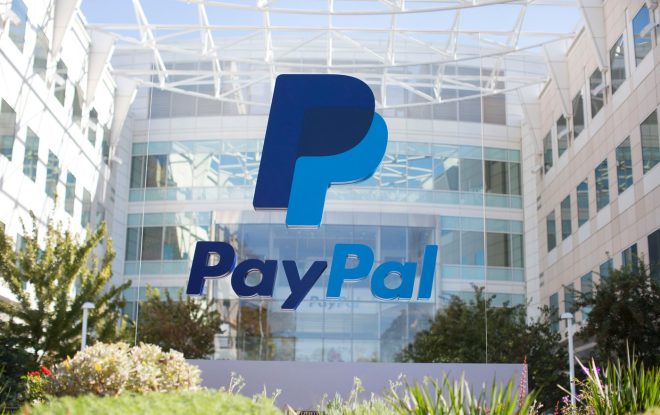Microsoft's Stock Buyback: History Says This Is the Likely Impact
While Microsoft (NASDAQ: MSFT) continues to pour money into capital expenditures (capex) to build its cloud computing infrastructure for artificial intelligence (AI) applications, the company has decided it also has money left to return to shareholders.
The software leader hiked its quarterly dividend by 10%, taking it to $0.83. That’s good for a forward yield of approximately 0.75%, which isn’t likely to draw a lot of income-focused investors. The dividend will be payable on Dec. 12 to shareholders of record as of Nov. 21.
Meanwhile, the company also announced a new $60 billion buyback plan, with no expiration date.
Microsoft has not been a big buyer of its stock this year, so investors might be wondering what impact this new repurchase plan could have. Let’s see what history has to say.
Will this buyback plan boost Microsoft’s stock?
This is the third time since the fall of 2019 that Microsoft has increased or initiated a buyback, with all three announcements coming in September. They have all been in the $40 billion to $60 billion range.
The company last adjusted its buyback plan three years ago, with a similar $60 billion repurchase plan. With the stock trading at around $300 at the time, it would drift lower and end 2022 at below $240 a share.
Before that, the company bolstered its buyback plan by $40 billion in September of 2019 with the stock trading just under $140. It then repurchased a lot of shares the next couple of quarters. It initially lifted the stock, but with the onset of COVID, by late March of 2020, the stock was back to around the same levels as when the buyback was initiated.
Overall, history indicates that the buyback will have little impact on Microsoft’s stock. While $60 billion sounds like a lot, it represents less than 2% of its shares outstanding and won’t move the needle much.
So what will affect Microsoft’s stock?
At this point, the biggest driver of Microsoft’s stock will likely come down to how well it can capture the AI opportunity. The company has been at the forefront of AI since it partnered with and greatly increased its investment in OpenAI last year.
Thus far, the Azure cloud computing business has been a big AI winner, consistently seeing growth of around 30% this year. This is a pay-as-you-go consumption business, and Microsoft has benefited from customers using its services to create their own AI solutions.
The GitHub segment, which is a platform for developers to create, store, and share their code, has seen its revenue surge following the introduction of an AI-powered assistant called Copilot that helps developers complete their coding. Last quarter, the company said its GitHub Copilot was behind 40% of the segment’s growth.
The company is also using AI in its other products, including Microsoft 365 and LinkedIn. While the company saw low double-digit growth in its Productivity segment, it is looking to continue to drive revenue through the recent introduction of improved Copilots for its Microsoft 365 suite of platforms, which include Excel, Word, PowerPoint, Teams, and Outlook.
The company currently changes $30 a month per user for its Microsoft 365 Copilot add-on, while the standard business subscription cost for Microsoft 365 is $12.50 per user per month, and $22.50 per user per month for its premium business subscription that includes a number of cybersecurity and identity management options.
Thus, you can see the potential revenue opportunity that Copilot offers Microsoft. The company added a number of attractive features that it hopes will draw customers to buy the Copilot add-ons, including being able to code with Python using natural language in Excel and a new collaborative feature called Copilot Pages that lets multiple users and AI work together on a shared platform.
Thus, while history says Microsoft’s buyback will have little effect on its stock, history also says the company’s ability to innovate and adapt will be a huge long-term positive. And on this front, I expect AI to continue to be a growth driver over the next several years, both with Azure and Copilot.
Should you invest $1,000 in Microsoft right now?
Before you buy stock in Microsoft, consider this:
The Motley Fool Stock Advisor analyst team just identified what they believe are the 10 best stocks for investors to buy now… and Microsoft wasn’t one of them. The 10 stocks that made the cut could produce monster returns in the coming years.
Consider when Nvidia made this list on April 15, 2005… if you invested $1,000 at the time of our recommendation, you’d have $710,860!*
Stock Advisor provides investors with an easy-to-follow blueprint for success, including guidance on building a portfolio, regular updates from analysts, and two new stock picks each month. The Stock Advisor service has more than quadrupled the return of S&P 500 since 2002*.
*Stock Advisor returns as of September 16, 2024
Geoffrey Seiler has no position in any of the stocks mentioned. The Motley Fool has positions in and recommends Microsoft. The Motley Fool recommends the following options: long January 2026 $395 calls on Microsoft and short January 2026 $405 calls on Microsoft. The Motley Fool has a disclosure policy.
Microsoft’s Stock Buyback: History Says This Is the Likely Impact was originally published by The Motley Fool




Leave a Reply